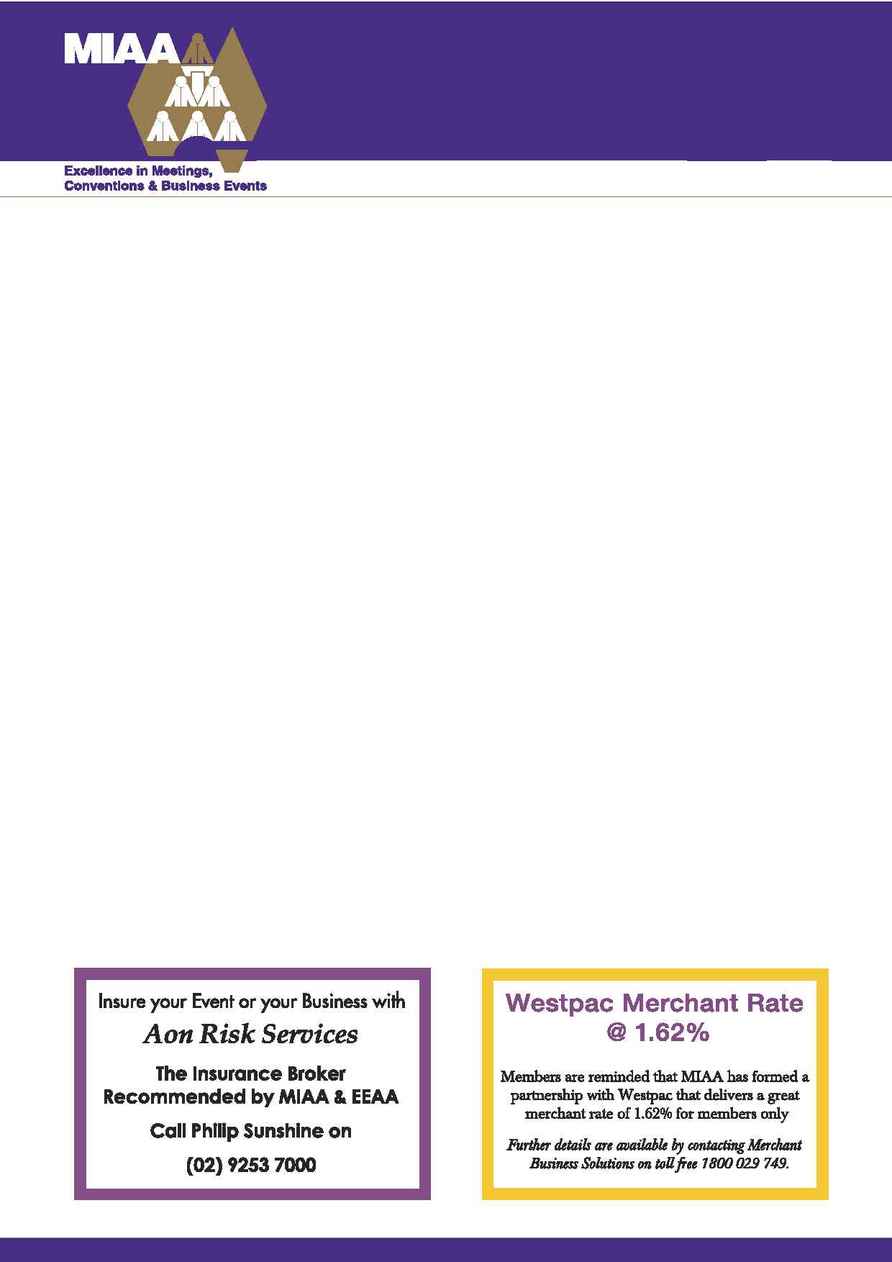
It has been a source of great satisfaction to
the MIAA Council that members are
continuing to actively participate in the
professional development program offered
by MIAA through its Branches. In most
States, the numbers of attendees has risen
strongly in the past two years, reflecting the
invaluable work undertaken by dedicated
members of branch PD committees and
branch staff.
What has been happening behind the scenes, but of equal importance,
is the work to enhance the MIAA PD program to even more closely meet
the needs or our members.This process recognises that, although there will
always be local/State issues requiring targeted programs, overall the
career paths in the industry and the skill needs that relate to those paths
are universal across the country. Thus, what is needed is a national
curriculum, which truly reflects the professional development of meetings
& events industry people.
In undertaking work to link a national PD program to industry career
paths, MIAA has been greatly assisted by the work of training specialist
Jenny James, and also the work of Tourism Training Australia and the
competency standards in place for our sector. We have also been strongly
influenced by the work done over the years of the core PD offerings of
MIAA, including the residential program, Essentials and the Branch PDs.
Career Paths
Although MIAA is made up of a large variety of businesses, the core
membership deals in the area of sales & marketing, and meetings/events
management. The main exceptions to this are those that work in
operational areas such as catering, technicians and the like. Thus, if we
take our two major streams, being sales & marketing and meetings &
events management, we can look more closely at the career path
applicable to people working in these areas. In saying this, the first thing
that is obvious is that many of the skills are needed equally by both
streams, and in reality, people switch between sales & marketing roles and
organizational responsibilities for meetings & events.
Table 1 summarises the career path levels that have been identified
for the two main streams. In reviewing the table, please note that the years
are a guide only (not gospel!). In many complex businesses, the senior level
is not achieved until well after 5 years. Conversely, the aptitude and
suitability of individuals could mean that they are appointed into roles well
in advance of this timetable. Please also note that the skill summaries have
been abbreviated for the sake of this article. Your feedback on these paths
is welcome.
MIAA - LINKING PROFESSIONAL
DEVELOPMENT PROGRAM TO
NATIONAL CAREER PATH PLANNING
meetings
meetings
issue no.24 July 2003
· to p2
